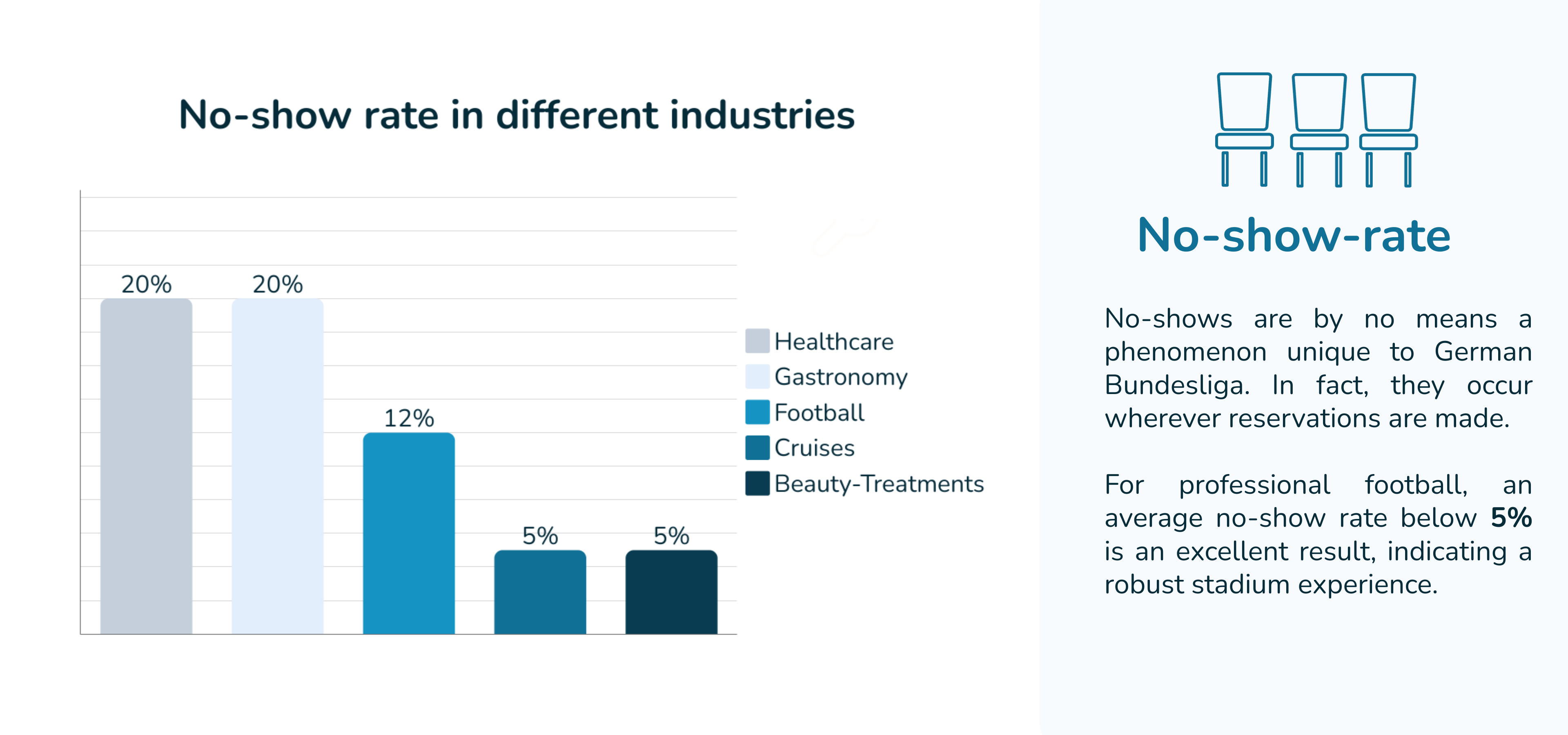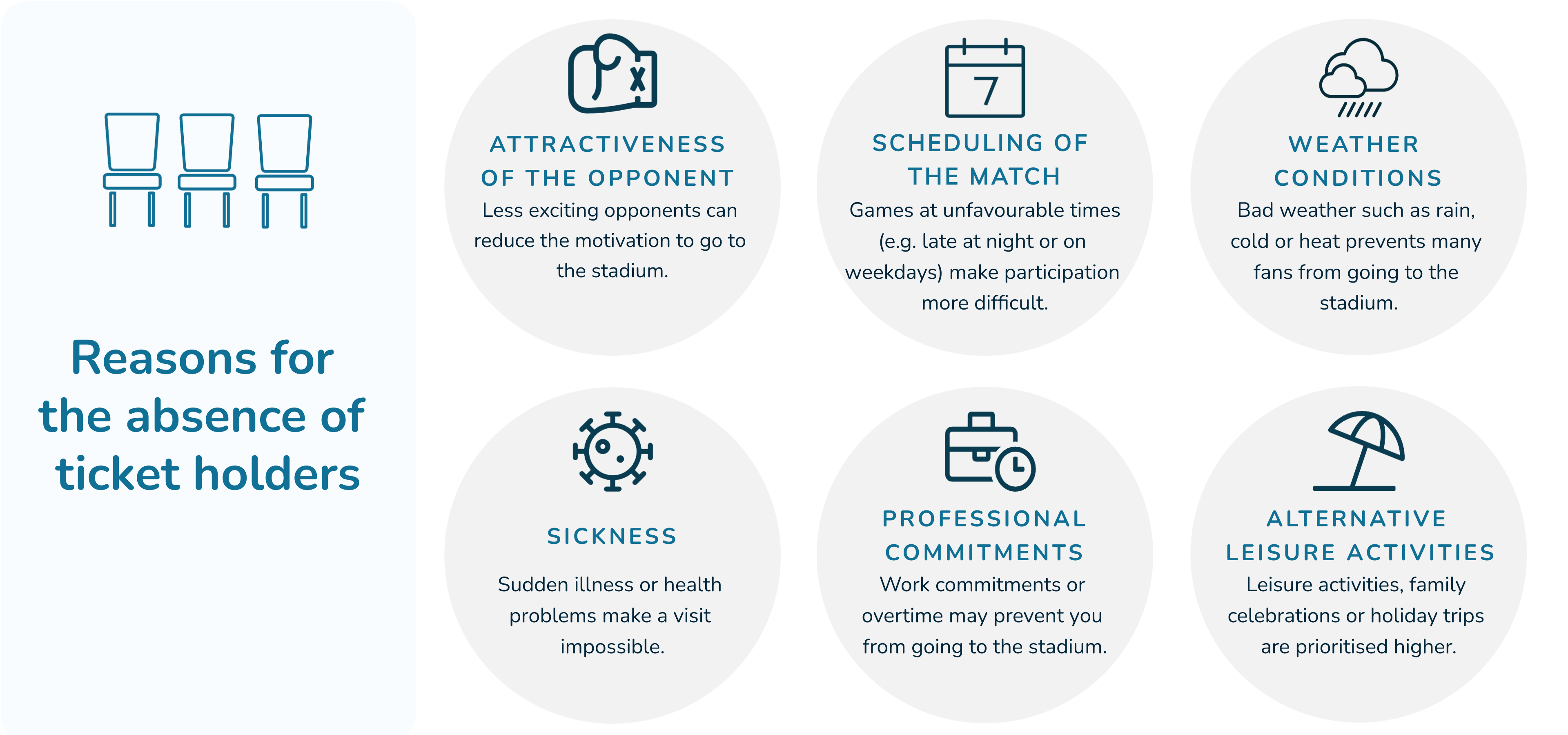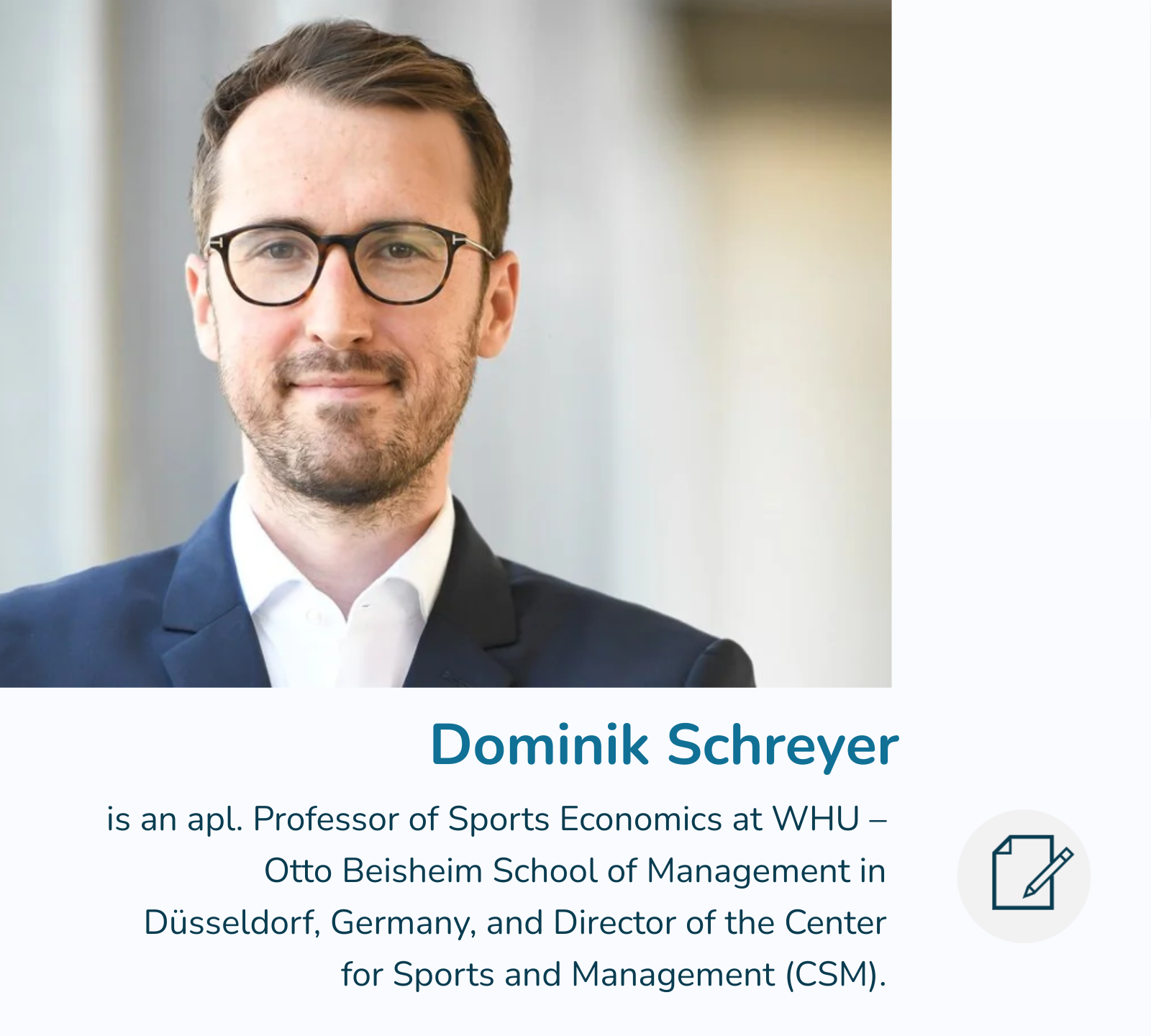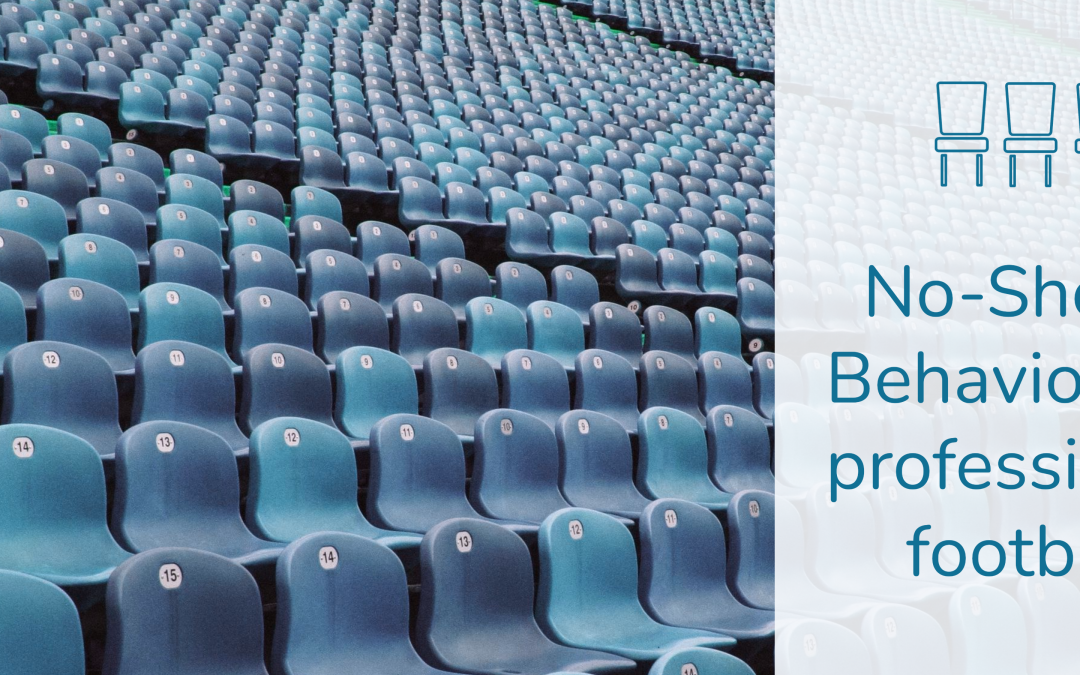From numerous discussions and projects (FC Bayern Munich counts on Smart Pricer for ‘no-show’ reduction) with our partners, we know that the ‘no-show’ phenomenon is a relevant field of action for many event organisers.
We are delighted to present a guest article on this topic by Dr Dominik Schreyer, Professor of Sports Economics at WHU and Director of the Center for Sports and Management (CSM).
After categorising the current situation, he addresses the following questions
- What is a ‘good’ no-show rate?
- Why do ticket holders stay away from the game on match day?
- How can the no-show rate be reduced?
His analysis begins with a key observation from the Bundesliga:
Berlin, January 2025, Dominik Schreyer
As soon as the first cold waves hit, the question regularly arises: why are Bundesliga stadiums often dotted with empty seats despite high ticket demand? The answer is surprisingly simple: as in many other industries, there are so-called no-shows in professional football. These are ticket holders who fail to show up on match day without prior notice.
Before the pandemic, the average no-show rate in the Bundesliga, according to our study, was around 12 percent—equivalent to roughly one in eight ticket holders—and showed an upward trend. Currently, comprehensive data is only partially available. Some Bundesliga clubs had no-show rates significantly exceeding 12 percent, while others performed much better.
For this reason, Smart Pricer carried out a market research project together with the Rhine-Ruhr 2025 ticketing team. The aim was to analyse the willingness to pay and price sensitivity of various target groups and thus create a data-based foundation for a value-based pricing approach.
1. Empty seats can diminish perceived product quality, especially for hospitality customers and sponsors.
2. Additionally, operational inefficiencies arise, such as food waste or overstaffing.
3. Last but not least, a lower spectator turnout could theoretically weaken the home advantage.
WHAT IS A “GOOD” NO-SHOW RATE?
No-shows are by no means a phenomenon unique to the German Bundesliga. In fact, they occur wherever reservations are made.
-
- 25 %: Average no-show rate in the healthcare sector.
- 30 % or more: in U.S. college sports.
- 20 %: for weddings or restaurant bookings.
- < 5 %: Sectors such as cruises and beauty treatments perform particularly well – a benchmark that can also serve as best practice for professional football.

WHY DO TICKET HOLDERS MISS MATCHES?
Our empirical studies, conducted in collaboration with European football clubs such as FC Basel or AC Sparta Praha, show that no-show behavior is generally explained by the perceived value of an event, which arises from weighing benefits against opportunity costs.
Attractiveness of the opponent:
Factors that increase perceived value include the attractiveness of the opponent, which is, however, not only influenced by the concentration of talent (e.g., reflected in market values) but also by the geographical proximity of the rival, among others. The higher the perceived value for the ticket holder, the more likely they are to attend on match day.
Scheduling of the match and weather conditions:
Opportunity costs, on the other hand, are significantly influenced by factors such as the timing of the match and weather conditions. Weeknight games or those late on Sunday evenings negatively impact admission decisions, as do extreme weather conditions—whether too hot, too cold, or rainy. The lower the opportunity costs, the higher the likelihood that a ticket holder will attend the game.
Discrepancy between perceived and stated reasons:
Intriguingly, however, when ticket holders are retrospectively asked about their reasons for missing a match, they often provide different explanations. Commonly cited reasons include illness, work commitments, travel plans, or alternative leisure activities, many of which are often tied to family obligations. This discrepancy between the observable causes and stated reasons is significant. Retrospectively, people tend to offer socially acceptable or easily understandable reasons, while unconscious mechanisms, such as the actual cost-benefit analysis, often go unrecognized.

The aforementioned mechanism, however, remains largely intact: if the opponent is attractive—such as a top team—illnesses are ignored, shifts are swapped, or family commitments are postponed. Conversely, for matches against relegation contenders, the decision to attend a match becomes much more difficult. This is particularly true for season ticket or complimentary ticket holders, whose no-show rates are significantly higher than those of paying single-ticket holders.
Interestingly, ticket price and no-show rates do not follow a linear pattern. This means that no-show rates are relatively high for both very cheap and very expensive tickets, while they are lower in between.
The reason? It seems that ticket holders who can afford to pay significantly above-average ticket prices often belong to a demographic for whom price plays a secondary role.
HOW CAN THE NO-SHOW RATE BE REDUCED?
Although our understanding of suitable countermeasures remains limited in empirical research, potential strategies should be developed along the lines of the mechanism described above. Blanket recommendations are unlikely to succeed.
-
-
- Reduction of season tickets:
Clubs with high demand could, for instance, gradually reduce the share of season tickets and make it easier for ticket holders to resell unused tickets—through opt-in systems, for example—on the club’s own secondary market. - Optimise matchday communication:
Furthermore, matchday communications should focus more on the specific opponent, complemented by measures that sustainably strengthen fans’ identification with their club. - Improving the matchday experience:
At the same time, the matchday experience—which has changed little since the Bundesliga’s inception and is hardly distinguishable across various venues—should be gradually improved. Greater family-friendliness, in particular, could help sustainably lower opportunity costs for specific target groups.
- Reduction of season tickets:
-

Bio
In his research, Dr. Schreyer explores the role of sociopsychological factors in individual economic behavior and decision-making through the lens of professional sports. In particular, however, he is keenly interested in analyzing stadium attendance demand, including the so-called no-show behavior of football fans, especially season ticket holders. Dr. Schreyer has published over 40 articles in international peer-reviewed journals and regularly shares his insights on LinkedIn.
Do you have any questions, suggestions or would you like to discuss this topic with us? Then don’t hesitate to contact us – we look forward to a dialogue with you!

